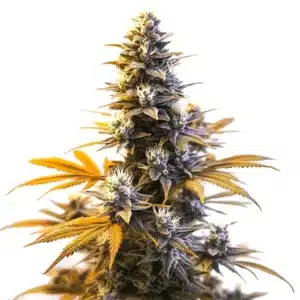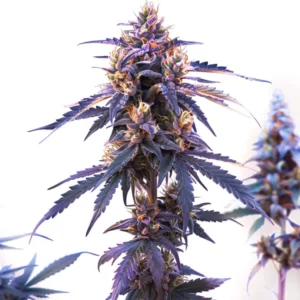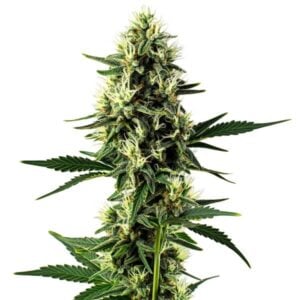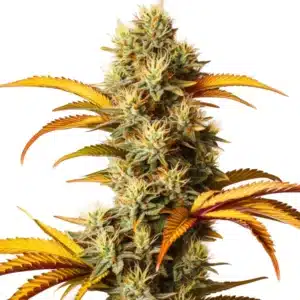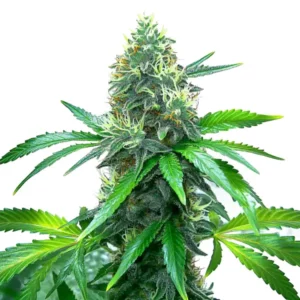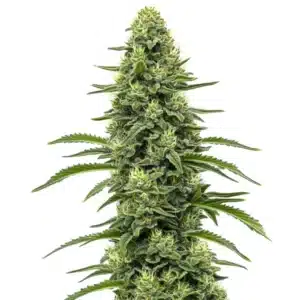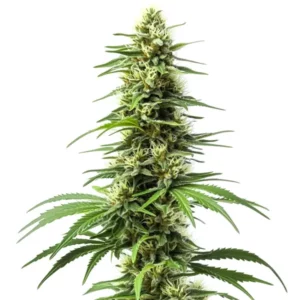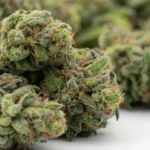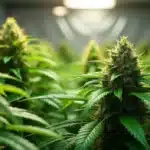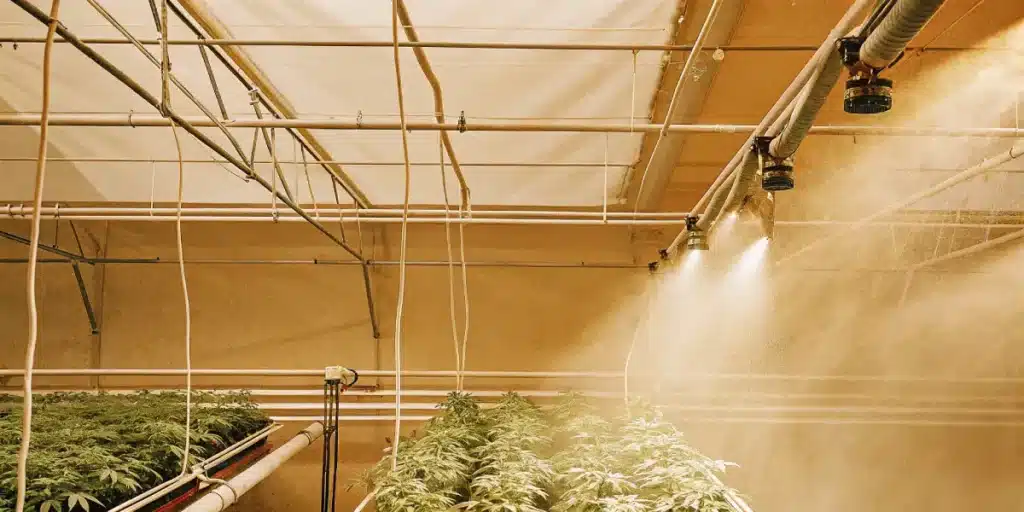
Water Cycle in Indoor Cannabis Grow Setups
The water cycle in indoor cannabis grow setups is a vital component for successful cultivation. Every grower, whether new or experienced, understands that water is the lifeblood of cannabis plants. Proper hydration ensures that your cannabis plants thrive, producing lush foliage and potent buds. However, managing the water cycle effectively can be challenging without the right knowledge.
Indoor cannabis cultivation allows you to control many aspects of the growing environment, including the water cycle. This control is crucial for optimizing plant health and maximizing yield. Water cycle optimization for indoor cannabis involves knowing how water moves through your grow setup and how plants use it. This knowing helps you make informed decisions about watering schedules and methods.
Recommended Strains
Blue Dream
|
|
THC | 17% - 24% (Medium) |
|
|
Type | Feminized |
|
|
Yield | High |
|
|
Phenotype | 50% Indica / 50% Sativa |
GG4
|
|
THC | 27% (High) |
|
|
Type | Feminized |
|
|
Yield | High |
|
|
Phenotype | 40% Indica / 60% Sativa |
Humidity control in cannabis grow rooms is closely related to the water cycle. As plants transpire, they release moisture into the air, affecting humidity levels. Managing this humidity is crucial for preventing mold and mildew, which can ruin crops. A well-maintained water cycle helps keep humidity levels in check, ensuring a healthy growing environment.
Watering Techniques for Indoor Cannabis
Choosing the right watering technique is crucial for maintaining an efficient water cycle in indoor cannabis grow setups. Different methods can affect how water is absorbed and used by your plants. Drip irrigation is one popular technique, providing a slow and steady supply of water directly to the roots. This method minimizes water runoff and ensures efficient water use in indoor cannabis gardening.
Hand watering is another common technique, giving growers the opportunity to interact closely with their plants. This method allows for precise control over the amount of water each plant receives. However, it can be time-consuming, especially for larger grows. Whether you choose drip irrigation or hand watering, monitoring soil moisture is key to optimizing the water cycle.
Another technique worth considering is the wick system, which uses a wick to draw water from a reservoir into the growing medium. This method ensures that plants receive a consistent supply of moisture without the risk of overwatering. It’s particularly useful for small-scale grows or beginners who are still mastering watering schedules.
Besides to the wick system, some growers are exploring the benefits of using self-watering pots. These pots have built-in reservoirs that automatically supply water to the plants as needed, reducing the need for frequent manual watering. This can be a significant time-saver and helps in water cycle optimization for indoor cannabis.
- Drip Irrigation: Efficient, minimizes runoff
- Hand Watering: Precise control, time-consuming
- Flood and Drain: Automated, suitable for hydroponics
Promos & Deals
Recycling Water in Cannabis Cultivation
Recycling water in cannabis cultivation is not only eco-friendly but also cost-effective. Many growers implement systems to collect and reuse water, reducing waste and conserving resources. One common method is using a catchment system to collect runoff water, which can be filtered and reused for subsequent watering.
Incorporating a recycling system into your indoor cannabis grow setup can significantly reduce water usage. This system helps in managing water runoff in cannabis grow setups, ensuring that excess water does not go to waste. By reusing water, you are also minimizing the environmental impact of your cultivation efforts.
Advanced recycling systems can be integrated with nutrient management solutions, allowing growers to adjust nutrient concentrations in recycled water. This integration ensures that plants receive balanced nutrition, promoting healthier growth and maximizing yield potential. The use of such systems is a step forward in efficient water use in indoor cannabis gardening.
Another aspect of recycling water in cannabis cultivation is the use of greywater systems, which can treat and recycle water from non-sewage sources like sinks or showers. By treating this water for safe use in irrigation, growers can further reduce their reliance on fresh water sources, promoting sustainability in their cultivation practices.
- Catchment Systems: Collect and reuse runoff
- Filtration: Ensures water quality
- Cost-effective: Reduces water bills
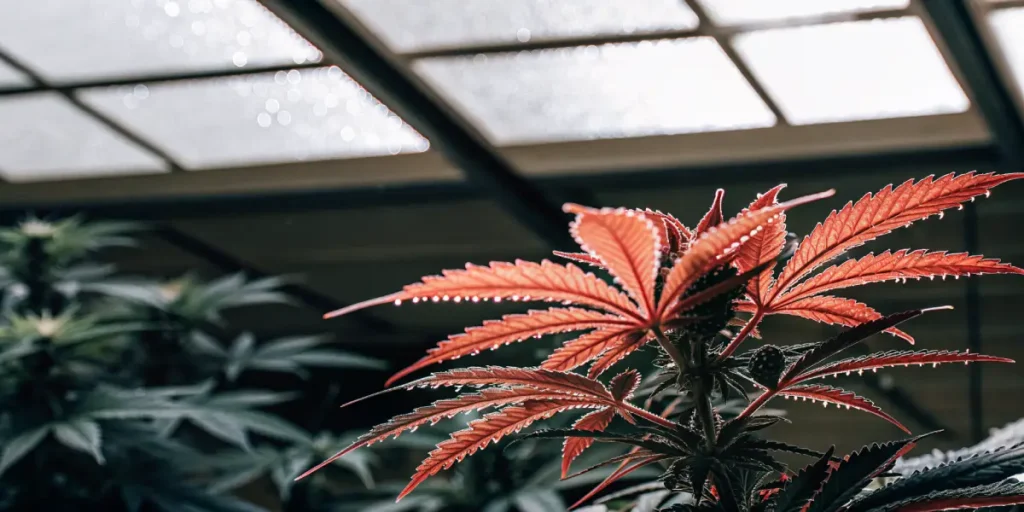
Choosing the Right Cannabis Strains
Different cannabis strains may have varying water needs. It’s essential to choose strains that align with your water cycle management plans. Blimburn Seeds offers a variety of strains suitable for indoor cultivation, each with unique characteristics. The Blue Dream strain is known for its resilience and moderate water requirements, making it a great choice for beginners.
For more experienced growers, the Gorilla Glue #4 strain offers a robust growth pattern and can handle a bit more water. This strain thrives in well-optimized water cycles, rewarding growers with dense, potent buds. Lastly, the OG Kush strain requires careful water management due to its sensitivity to moisture levels.
When selecting strains, it’s also vital to consider the climate conditions of your grow room. Some strains are more adaptable to fluctuations in humidity and temperature, while others may require more stable conditions. Knowing these preferences will assist in achieving efficient water use in indoor cannabis gardening.
Experimenting with different strains can also provide insights into their specific water needs and how they respond to varied watering techniques. This experimentation can help you develop a more nuanced knowing of the water cycle in indoor cannabis grow setups, leading to better overall cultivation practices.
- Blue Dream: Moderate water needs
- Gorilla Glue #4: Robust, dense buds
- OG Kush: Sensitive to moisture
Managing Humidity in Grow Rooms
Managing humidity control in cannabis grow rooms is essential for maintaining a balanced water cycle. High humidity can lead to mold and pest issues, while low humidity can stress your plants. Using dehumidifiers and fans helps regulate humidity levels, ensuring a conducive environment for your cannabis plants.
Monitoring humidity levels is crucial for adjusting your watering schedule. High humidity may require less frequent watering, while low humidity might necessitate more water. By keeping a close eye on humidity, you can fine-tune your water cycle for optimal plant growth.
Besides to mechanical aids like dehumidifiers and fans, proper ventilation is key to maintaining ideal humidity levels. Ensuring that fresh air circulates through your grow room will help prevent the buildup of excess moisture and reduce the risk of mold and mildew.
Natural methods, such as placing water trays or using humidity domes, can also be employed to manage humidity levels. These methods are particularly useful during the seedling stage when maintaining consistent humidity is critical for young plant development. Such strategies contribute to overall water cycle optimization for indoor cannabis.
- Dehumidifiers: Control excess moisture
- Fans: Improve air circulation
- Humidity Monitors: Track levels accurately

FAQs
How often should I water my indoor cannabis plants?
Watering frequency depends on various factors, including plant size, pot size, environmental conditions, and the growth stage of your plants. Generally, young plants and seedlings require less water than mature plants. It’s crucial to check the moisture level of the soil regularly. A good rule of thumb is to water when the top inch of soil feels dry.
Overwatering is a common mistake among new growers. Cannabis plants prefer a wet-dry cycle, where the soil is allowed to dry out slightly between waterings. This cycle encourages root growth and prevents root rot. Always ensure that your pots have adequate drainage to manage water runoff effectively.
As each strain may have unique water needs, it’s important to tailor your watering schedule to accommodate these differences. Observing your plants for signs of stress or dehydration will help you adjust your watering practices accordingly, ensuring optimal water cycle management.
Environmental factors such as temperature and humidity also influence watering frequency. During hotter periods, plants may require more frequent watering, while cooler conditions might necessitate less. Keeping these variables in mind will aid in maintaining an efficient water cycle in indoor cannabis grow setups.
What is the best way to recycle water in my grow setup?
Recycling water in cannabis cultivation can be achieved through several methods. One practical approach is to use a catchment system to collect runoff water. This water can then be filtered to remove impurities before being reused for irrigation. Implementing a simple filtration system ensures that recycled water remains high quality for your plants.
Another method is to use hydroponic systems, where water is continuously circulated and reused. These systems often incorporate advanced filtration and nutrient management, providing an efficient way to recycle water and nutrients. Recycling not only conserves resources but also reduces costs associated with water usage.
Implementing a closed-loop system can further enhance your recycling efforts. Closed-loop systems are designed to capture, purify, and redistribute water within your grow setup, minimizing waste and promoting sustainability in cannabis cultivation.
Additionally, exploring the use of rainwater harvesting can provide an additional source of water for your grow operation. By collecting and storing rainwater, you can reduce reliance on municipal water supplies, contributing to more sustainable and eco-friendly cultivation practices.
How can I optimize the water cycle for different cannabis strains?
Optimizing the water cycle for specific cannabis strains involves knowing each strain’s unique water requirements. Some strains, like Blue Dream, have moderate water needs and are tolerant of slight fluctuations in moisture levels. Others, like OG Kush, require more precise water management due to their sensitivity.
Researching the water needs of your chosen strains is essential. Adjust your watering schedule and techniques based on the specific requirements of each strain. Monitoring plant health and making adjustments as needed will help you maintain an optimized water cycle tailored to your plants.
Besides to adjusting watering practices, it’s important to consider the growing medium you’re using, as different mediums can affect water retention and drainage. Choosing the right medium for your chosen strains can contribute to more effective water cycle optimization for indoor cannabis.
Regularly assessing the health of your plants and their growth patterns will provide valuable insights into their water needs. By staying attuned to these indicators, you can make timely adjustments to your watering approach, ensuring that each strain thrives under optimal conditions.
What are the signs of poor humidity control in a grow room?
Poor humidity control in cannabis grow rooms can manifest in several ways. High humidity often leads to mold and mildew growth, which can damage your plants. You may notice white powdery spots on leaves or a musty smell in the room, indicating mold presence.
Low humidity, on the other hand, can cause plants to become dry and brittle. Leaves may curl or develop brown edges, and growth may slow down. Regularly monitoring humidity levels and using dehumidifiers or humidifiers as needed can help prevent these issues and maintain a stable growing environment.
Besides to visual signs, poor humidity control can also affect plant yield and potency. Plants grown in suboptimal humidity conditions may produce smaller or less potent buds, impacting the overall success of your grow operation.
Investing in quality humidity control equipment, such as hygrometers and automated humidity systems, can help you maintain consistent conditions in your grow room. This investment will pay off with healthier plants and more successful harvests, contributing to effective humidity control in cannabis grow rooms.
How do I prevent water runoff in my indoor grow setup?
Preventing water runoff in cannabis grow setups is crucial for sustainability and efficiency. Choosing the right pots with adequate drainage holes is the first step. Ensure that excess water can drain away easily, preventing waterlogging and root rot.
Using a drip irrigation system can also help minimize runoff. This method delivers water directly to the roots at a controlled rate, reducing waste. Additionally, adjusting your watering schedule to match your plants’ needs will prevent excess water from accumulating in the soil.
Incorporating water-absorbing mats or trays under your pots can help capture any excess runoff, allowing you to reuse this water for future irrigation. This practice not only prevents waste but also supports recycling water in cannabis cultivation.
Regularly inspecting your grow setup for leaks or improper drainage can also help in managing water runoff in cannabis grow setups. Addressing these issues promptly will ensure that water is used efficiently and that your plants receive the optimal amount of moisture.




